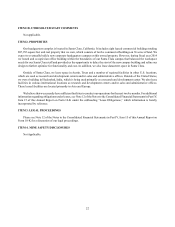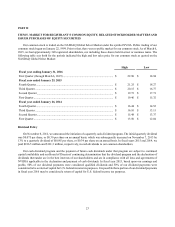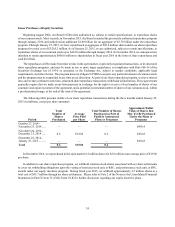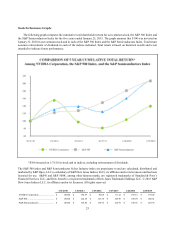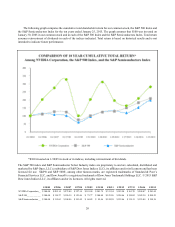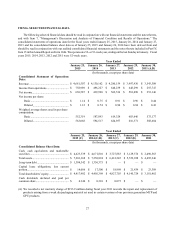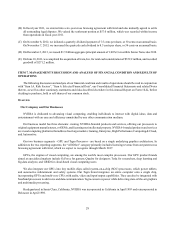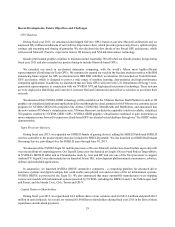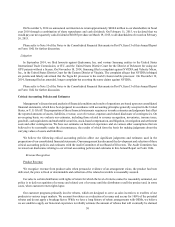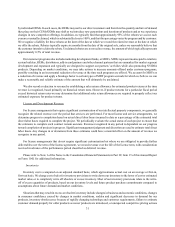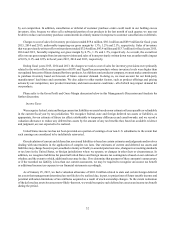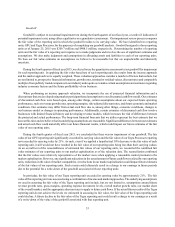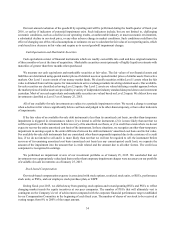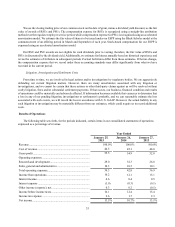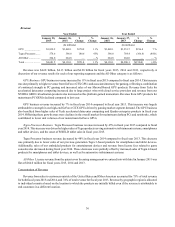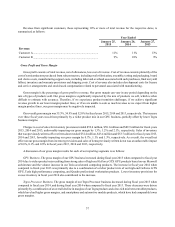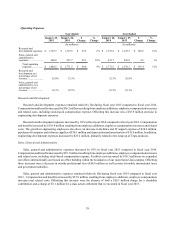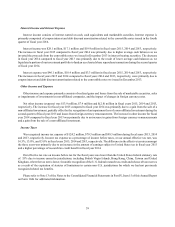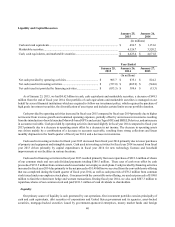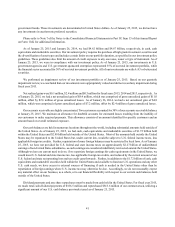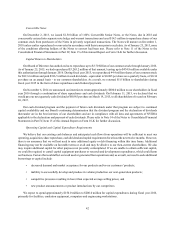NVIDIA 2015 Annual Report Download - page 112
Download and view the complete annual report
Please find page 112 of the 2015 NVIDIA annual report below. You can navigate through the pages in the report by either clicking on the pages listed below, or by using the keyword search tool below to find specific information within the annual report.32
by our competition. In addition, cancellation or deferral of customer purchase orders could result in our holding excess
inventory. Also, because we often sell a substantial portion of our products in the last month of each quarter, we may not
be able to reduce our inventory purchase commitments in a timely manner in response to customer cancellations or deferrals.
Charges to cost of sales for inventory provisions totaled $59.4 million, $50.1 million and $89.9 million for fiscal years
2015, 2014 and 2013, unfavorably impacting our gross margin by 1.3%, 1.2% and 2.1%, respectively. Sales of inventory
that was previously written-off or written-down totaled $32.4 million, $43.4 million and $53.7 million for fiscal years 2015,
2014 and 2013, favorably impacting our gross margin by 0.7%, 1.1% and 1.3%, respectively. As a result, the overall net
effect on our gross margin from inventory provisions and sales of items previously written down was an unfavorable impact
of 0.6%, 0.1% and 0.8% in fiscal years 2015, 2014 and 2013, respectively.
During fiscal years 2015, 2014 and 2013, the charges we took to cost of sales for inventory provisions were primarily
related to the write-off of excess quantities of GPU and Tegra Processor products whose inventory levels were higher than
our updated forecasts of future demand for those products. As a fabless semiconductor company, we must make commitments
to purchase inventory based on forecasts of future customer demand. In doing so, we must account for our third-party
manufacturers' lead times and constraints. We also adjust to other market factors, such as product offerings and pricing
actions by our competitors, new product transitions, and macroeconomic conditions - all of which may impact demand for
our products.
Please refer to the Gross Profit and Gross Margin discussion below in this Management's Discussion and Analysis for
further discussion.
Income Taxes
We recognize federal, state and foreign current tax liabilities or assets based on our estimate of taxes payable or refundable
in the current fiscal year by tax jurisdiction. We recognize federal, state and foreign deferred tax assets or liabilities, as
appropriate, for our estimate of future tax effects attributable to temporary differences and carryforwards; and we record a
valuation allowance to reduce any deferred tax assets by the amount of any tax benefits that, based on available evidence
and judgment, are not expected to be realized.
United States income tax has not been provided on a portion of earnings of our non-U.S. subsidiaries to the extent that
such earnings are considered to be indefinitely reinvested.
Our calculation of current and deferred tax assets and liabilities is based on certain estimates and judgments and involves
dealing with uncertainties in the application of complex tax laws. Our estimates of current and deferred tax assets and
liabilities may change based, in part, on added certainty or finality to an anticipated outcome, changes in accounting standards
or tax laws in the United States, or foreign jurisdictions where we operate, or changes in other facts or circumstances. In
addition, we recognize liabilities for potential United States and foreign income tax contingencies based on our estimate of
whether, and the extent to which, additional taxes may be due. If we determine that payment of these amounts is unnecessary
or if the recorded tax liability is less than our current assessment, we may be required to recognize an income tax benefit
or additional income tax expense in our financial statements accordingly.
As of January 25, 2015, we had a valuation allowance of $261.0 million related to state and certain foreign deferred
tax assets that management determined are not likely to be realized due, in part, to projections of future taxable income and
potential utilization limitations of tax attributes acquired as a result of stock ownership changes. To the extent realization
of the deferred tax assets becomes more-likely-than-not, we would recognize such deferred tax asset as an income tax benefit
during the period.


